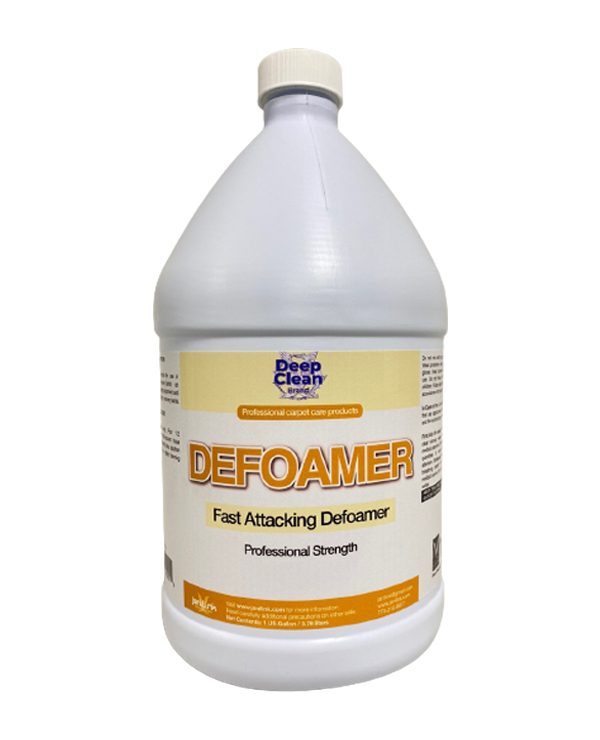The Mechanism Behind Chemical Defoamer and Its Foam Elimination Capabilities
The Mechanism Behind Chemical Defoamer and Its Foam Elimination Capabilities
Blog Article
Just How a Chemical Defoamer Can Boost Efficiency in Your Workflow and Procedures
In today's competitive industrial landscape, functional performance is extremely important, and the duty of a chemical defoamer can not be ignored. By attending to foam-related difficulties that interrupt processes, defoamers not only promote smoother procedures however likewise contribute to cost financial savings and boosted product quality.
Comprehending Chemical Defoamers
Chemical defoamers play a vital duty in numerous industrial procedures by properly lowering and stopping foam formation. Foaming can cause functional inefficiencies, enhanced production expenses, and compromised product top quality. Defoamers are specialized chemical ingredients developed to interrupt the stability of foam bubbles, thus making it possible for smoother handling and enhanced efficiency throughout several markets, including food and drink, drugs, and wastewater treatment.

These agents generally contain surfactants, oils, or polymeric substances that reduced the surface stress of the liquid, promoting the collapse of foam. The device by which defoamers run typically involves the destabilization of foam structures, allowing for quicker drain of fluid and the launch of caught air. Different formulations are tailored to particular applications, taking into consideration variables such as compatibility with the system, temperature level, and the nature of the liquid being dealt with.
Recognizing the make-up and functionality of chemical defoamers is important for choosing the suitable product for a provided application. By optimizing defoamer choice based on procedure needs, sectors can improve functional effectiveness, minimize foam-related challenges, and ultimately improve overall productivity.
Advantages of Using Defoamers
Using defoamers can substantially improve operational efficiency across various markets by effectively mitigating foam-related concerns. The existence of foam can interrupt processes, leading to raised downtime, lowered performance, and prospective quality destruction in end items. Defoamers help fight these obstacles by breaking down foam frameworks, therefore enabling smoother procedures.
One of the main advantages of using defoamers is the reduction of waste and remodel. By decreasing foam development, defoamers enhance the consistency of processes, ensuring that products are utilized efficiently. This not only lowers functional costs but additionally adds to sustainability initiatives by lowering resource intake.
In addition, defoamers can enhance item top quality. In manufacturing setups, too much foam can cause disparities in product characteristics, influencing customer complete satisfaction. By controlling foam degrees, defoamers aid maintain the preferred physical residential or commercial properties of items.

Applications in Various Industries
The performance of defoamers prolongs throughout a large range of industries, where their application addresses specific foam-related challenges intrinsic to every market. In the food and drink sector, defoamers are critical for maximizing manufacturing procedures, such as brewing and dairy products handling, where excessive foam can hinder flow prices and lower performance. By minimizing foam, these representatives boost item quality and consistency.
In the chemical manufacturing industry, defoamers are used in procedures like paint production and wastewater treatment. Here, they prevent foam development that can hinder mixing and separate stages, consequently enhancing the general efficiency and performance of operations.
In drugs, defoamers play a vital duty in the formulation of fluid drugs, making certain appropriate dosage and stability by regulating foam during blending and storage space. (Chemical Defoamer)
In addition, in the agricultural market, defoamers are used in pesticide formulations to improve application efficiency and decrease waste.
Selecting the Right Defoamer
Selecting the ideal defoamer is important for accomplishing optimal performance in numerous applications. The choice procedure must start with a complete understanding of the specific concerns available, including the sort of foam existing, the handling problems, and the chemical compatibility with various other formula elements.
Defoamers are formulated from a variety of products, including silicone, mineral oils, and fats. Determining the best make-up is crucial, as various materials show differing efficiency in diverse atmospheres. Silicone-based defoamers are typically favored in high-temperature applications due to their security, while organic defoamers may be a lot more ideal for water-based systems.
Additionally, consider the defoamer's effect on the last product. Some formulations can change the visual or practical residential properties, making it crucial to select a defoamer that meets product specs without jeopardizing high quality.
Testing is an additional critical action in selecting a defoamer. Small trials can supply beneficial understandings right into the defoamer's efficiency, enabling adjustments prior to major implementation. By meticulously examining these elements, services can boost performance and ensure that the defoamer successfully fulfills their functional requirements.
Finest Practices for Application
Executing a defoamer effectively calls for careful planning and adherence to ideal techniques to optimize its effectiveness. Carry out a thorough evaluation of the details application and foam qualities. Comprehending the type and source of foam will guide the selection of one of the most appropriate defoamer solution.
Following, develop the optimum dosage (Chemical Defoamer). Begin with a small test to identify the minimal effective concentration, as excessive use can bring about unfavorable impacts on item top quality or operational performance
Surveillance and readjusting the application approach is essential; make certain that the defoamer is presented at the ideal factor while doing so for optimal impact, such as during mixing or instantly after foam development.

Furthermore, preserve clear communication with all relevant workers to ensure regular application techniques and to share understandings on performance end results.
Verdict
In conclusion, the investigate this site use of chemical defoamers plays a pivotal role in enhancing functional effectiveness throughout diverse sectors. Ultimately, the consolidation of defoamers right into industrial procedures fosters reliability and adds to total performance improvement.

In the food and beverage market, defoamers are essential for optimizing manufacturing processes, such as brewing and dairy products processing, where extreme foam can impede circulation rates and decrease effectiveness. Silicone-based defoamers get more are frequently preferred in high-temperature applications due to their security, while organic defoamers might be extra this page appropriate for water-based systems.
Report this page